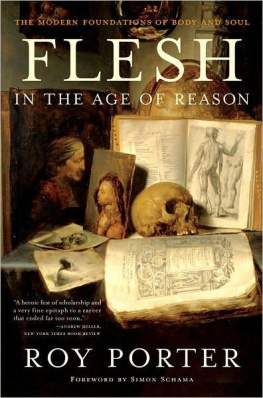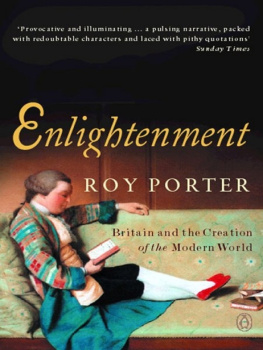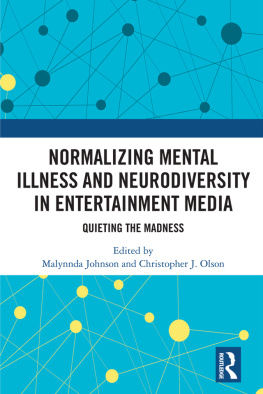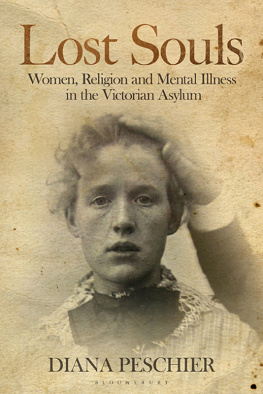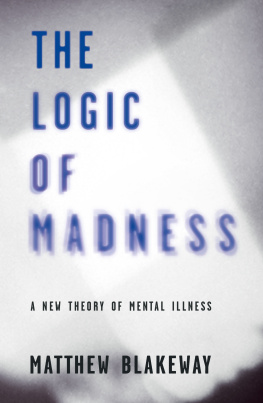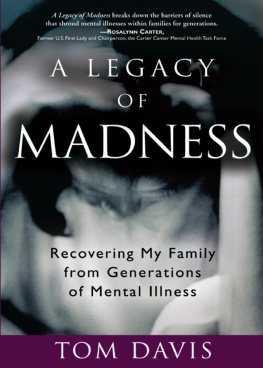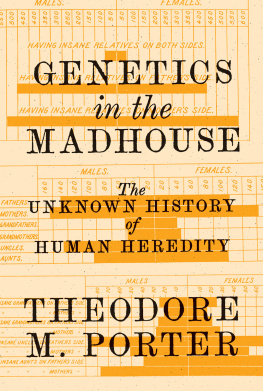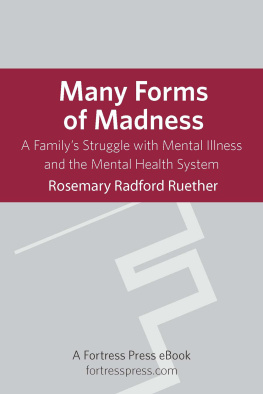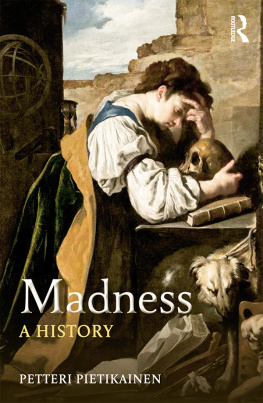4 - Fools and folly
To reason with a lunatic is folly
(George Man Burrows,
Commentaries on Insanity, 1828)
Stigma
All societies judge some people mad: any strict clinical justification aside, it is part of the business of marking out the different, deviant, and perhaps dangerous. Such stigma, according to the American sociologist Erving Goffman, is the situation of the individual who is disqualified from full social acceptance . Stigmatizingthe creation of spoiled identityinvolves projecting onto an individual or group judgements as to what is inferior, repugnant, or disgraceful. It may thus translate disgust into the disgusting and fears into the fearful, first by singling out difference, next by calling it inferiority, and finally by blaming victims for their otherness.
This demonizing process may be regarded as psychologically and anthropologically driven, arising out of deep-seated and perhaps unconscious needs to order the world by demarcating self from other, as in the polarized distinctions we draw between Insiders and Outsiders, Black and White, Natives and Foreigners, Gay and Straight, Pure and Polluted, and so forth. The construction of such them-and-us oppositions reinforces our fragile sense of self-identity and selfworth through the pathologization of pariahs.
Setting the sick apart sustains the fantasy that we are whole. Disease diagnosis thus constitutes a powerful classificatory tool, and medicine contributes its fair share to the stigmatizing enterprise. Amongst those scapegoated and anathematized by means of this cognitive apartheid, the insane have, of course, been conspicuous. This polarizing of the sane and the crazy in turn spurred and legitimized the institutionalizing trend which, as will be discussed in Chapter 5, gathered momentum from the seventeenth century.
6 - The rise of psychiatry
Canst thou not minister to a mind diseased?
(Macbeth)
Mechanizing madness
Modern times inherited varied models of madness. Within Christendom, abnormality, as we have seen, had commonly been diagnosed as supernatural, be it diabolical or divine. Renaissance humanism and scientific rationalism by contrast advanced naturalistic and medical concepts. The mechanical philosophys orderly law-governed universe discounted satanic possession, while mania and melancholy, insisted enlightened physicians, originated not in the skies but in the soma; the aetiology of insanity was organic.
But if so, precisely which organs and operations were implicated? The old humoral readings of mental disorder, which had stressed the roles of blood and yellow bile (choler) in mania and black bile in melancholia, lost credit amongst the medical community as the new science refigured the body in mechanical terms which highlighted the solids (organs, nerves, and fibres) rather than the fluids. Iatrophysics (medical physics) pictured the body machine as a hydraulic system of piping, or as a neurological circuit wiring the limbs to the brain and conducting sensation and motion electrically.
One upshot was that in post-Cartesian medical writings mental illness in the strict sense became almost a contradiction in terms: the possibility of the mind or spirit per se being diseased was programmatically ruled out. Within Cartesian and Newtonian frameworks, the soul became definitionally inviolable, and doctors instead referred insanity to lesions of the body.
Developing that line of thinking, the Oxford-educated London physician Thomas Willis (1621-75) coined the term neurology and elaborated Descartes idea of the reflex. An avid dissector, Willis strove to localize mental functions to particular regions of the brain. His models of the central and peripheral nervous system depended on the operations of animal spirits, superfine chemical intermediaries between body and mind capable of being affected by either.
Proceeding on similar lines were Archibald Pitcairn, a Scot who taught at Leiden in the Netherlands, and his protg, Richard Mead. Lunatics, argued Mead, suffered from false ideas induced by the chaotic activities of those volatile animal spirits; these in turn fed back into the muscles to produce confused and uncontrolled movements in the limbs. The madman was thus a disordered sensory-motor machine in a state of break-downdelirium, for instance, held Mead, was not a distemper of the mind but of the body. Such somaticism served to confirm the authority of medicine, while also assuaging anxiety and stigma amongst patients, who would no longer be thought to be lost souls, clean out of their mind.
The re-ascription of madness as, at bottom, a bodily disorder was systematized in the teachings of Herman Boerhaave. In true Cartesian manner, that highly influential Leiden professor and his many disciples, notably Albrecht von Haller, maintained that the essential symptoms of madness lay in beliefs which, though lacking objective existence, were mistaken for reality. These delusions had a physical sourcemelancholy for instance resulted from the dissipation (evaporation) of the most volatile parts of the blood and the thickening of its black, fat and earthy residue, causing lethargy. Friedrich Hoffmann, professor of medicine at Halle, already discussed in Chapter 2 , developed a comparable solidist psychopathology based on the vessels, fibres, and pores.
With this somatic turn, the nervous system became the focal point of enquiry and explanation. Followers of Pitcairn, in particular his fellow Scot George Cheyne, speculated about the sympathy of the vascular and nervous systems with the brain. Imaging of the nerves as hollow pipes or as wires conveying waves or electrical impulses produced theories in which disordered thoughts and mood-swings were put down to some defect of the digestive and nervous systems, which led to slackness, excessive tension, or obstruction. The fervent Newtonian Nicholas Robinson maintained in his A New System of the Spleen (1729) that it was the nerve fibres which controlled behaviour; pathological laxity in them was the primary cause of melancholia. Every change of the Mind, he insisted, indicates a Change in the Bodily Organs. Far from being a matter of malingering on the one hand or imaginary Whims and Fancies on the other, insanity was thus a genuine malady, rooted in the real, mechanical Affections of Matter and Motion.
In the New World, Benjamin Rush of Philadelphia, the physician officially acknowledged by the American Psychiatric Association as the father of American psychiatry, held that practically all mental disorders were due to vitiated blood. His systematic remedy was bloodletting.
The psychological turn
After 1750 a theoretical transformation came about, owing in part to the growing uptake of those philosophical theories of sensation and perception promoted by the empiricist philosopher John Locke and furthered by the philosophe Condillac. Replacing Cartesian innate ideas with a model of the mind as originally a blank sheet of paper, John Locke, as we have seen, had suggested in his Essay on Human Understanding (1690) that madness was due to faulty associations in the processes whereby sense data were transformed into ideas. Lockean (mis)-association of ideas became central to new thinking about madness, above all in Britain but also in France.
Lockean thinking was then medicalized in part through William Cullen, doyen of the flourishing medical school set up in 1726 at Edinburgh University, who produced a more psychological paradigm of insanity. Basically imputing madness to excessive irritation of the nerves, Cullen held that the precipitating cause of derangement lay in acute cerebral activity. Insanity ( vesania ) was a nervous disorder, which arose when there was some inequality in the excitement of the brain, and he coined the term neurosis to denote any illness consequent upon such a disorder of the nervous system (by Freuds day, of course, the meaning of neurosis had utterly changed). Yet, within this somatic model, insanity was also for Cullen an unusual and commonly hurried association of ideas, leading to false judgement and producing disproportionate emotionsin other words, it was a mental disorder, albeit one grounded in dynamic neurophysiology. The psychological inspiration for this came from Cullens friend, the philosopher David Hume, who held Lockean sense impressions and associations of ideas fundamental to all intellectual operations. Cullens importance thus lay in reintegrating the mental into medical discourses on madness. His teachings proved highly influential.


